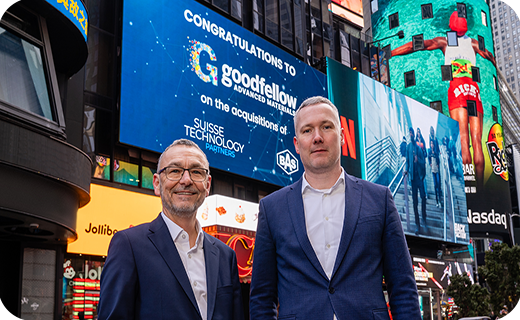High-Performance Aluminum: Understanding the 6000, 7000, and 8000 Series
When your project demands more—higher strength, better machinability, or cutting-edge performance—the 6000, 7000, and 8000 series aluminum alloys deliver.

When your project demands more—higher strength, better machinability, or cutting-edge performance—the 6000, 7000, and 8000 series aluminum alloys deliver.

In this episode, Mark, Adam, and Aphrodite talk materials for nuclear fusion, and the success stories Goodfellow has had within this sector.

Goodfellow’s Pd-Ag tubes offer high hydrogen permeability and durability for key fusion processes like tritium recovery and isotope separation. Their advanced properties and custom options support critical fuel cycle operations in fusion research.


From materials and CRMs to testing, analysis, and microfabrication services, see how Goodfellow's new partnerships offer integrated solutions for your challenges.

Dive into the most common aluminum series, their unique properties, and practical applications in research and industry.

Aluminum alloys are everywhere, from the lab bench to the wings of airplanes. But with hundreds of grades available, how do you pick the right one for your project?

High performance materials play a critical role in your cutting edge applications and tungsten is a truly indispensable metal.

Goodfellow announces the acquisition of two new companies